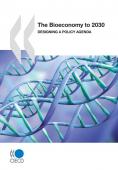
The biological sciences are adding value to a host of products and services, producing what some have labelled the “bioeconomy”. From a broad economic perspective, the bioeconomy refers to the set of economic activities relating to the invention, development, production and use of biological products and processes. If it continues on course, the bioeconomy could make major socioeconomic contributions in OECD and non-OECD countries. These benefits are expected to improve health outcomes, boost the productivity of agriculture and industrial processes, and enhance environmental sustainability. The bioeconomy’s success is not, however, guaranteed: harnessing its potential will require coordinated policy action by governments to reap the benefits of the biotechnology revolution.
The report highlights occupational safety and health (OSH) as an integral part of the promotion of green jobs and a greener economy to achieve an economic and social development that is also environmentally sustainable. The report looks at different “green industries” from an OSH perspective, and shows that while green jobs improve the environment, revitalize the economy and create new employment opportunities, they may also present a number of known and unknown risks for workers. The greening of traditional sectors which will continue to provide the bulk of all employment and harbour most occupational safety and health risks can provide a major opportunity to make them safer and healthier, as well as energy efficient and environmentally sustainable, provided the right measures are taken.
This report provides estimates of social and financial costs of environmental damage in India from three pollution damage categories: (i) urban air pollution, including particulate matter and lead; (ii) inadequate water supply, poor sanitation, and hygiene; (iii) indoor air pollution; and four natural resource damage categories: (a) agricultural damage from soil salinity, water logging, and soil erosion; (b) rangeland degradation; (c) deforestation; and (d) natural disasters. The estimates are based on a combination of Indian data from secondary sources and on the transfer of unit costs of pollution from a range of national and international studies. The quantification and monetary valuation of environmental damage involves many scientific disciplines including environmental, physical, and biological and health sciences, epidemiology, and environmental economics. Estimates of the costs of degradation are generally reported as a percent of conventional gross domestic product (GDP). This provides a useful estimate of the importance of environmental damages but it should not be interpreted that GDP will increase by a given percent if the degradation were to be reduced to zero.
The book presents a major meta-analysis of 'value of a statistical life' (VSL) estimates derived from surveys where people around the world have been asked about their willingness to pay for small reduction in mortality risks. The analysis seeks to explain the differences in the estimates, for example across countries. Differences in incomes and the magintude of the risk reduction people have been asked to value were found to be the factors having the strongest impact on VSL, but a number of other policy-relevant factors are also important. Based on the meta-analysis, and a broad review of the literature, the book also presents clear advice on how VSL values best can be used in assessments of environmental, health and transport policies, such as in cost-benefit analyses. Using explicit VSL estimates to quantify the benefits to society of fatality risk reductions can play an important role in the development of more cost-effective public policies.
